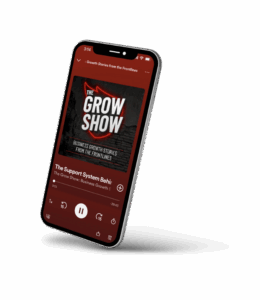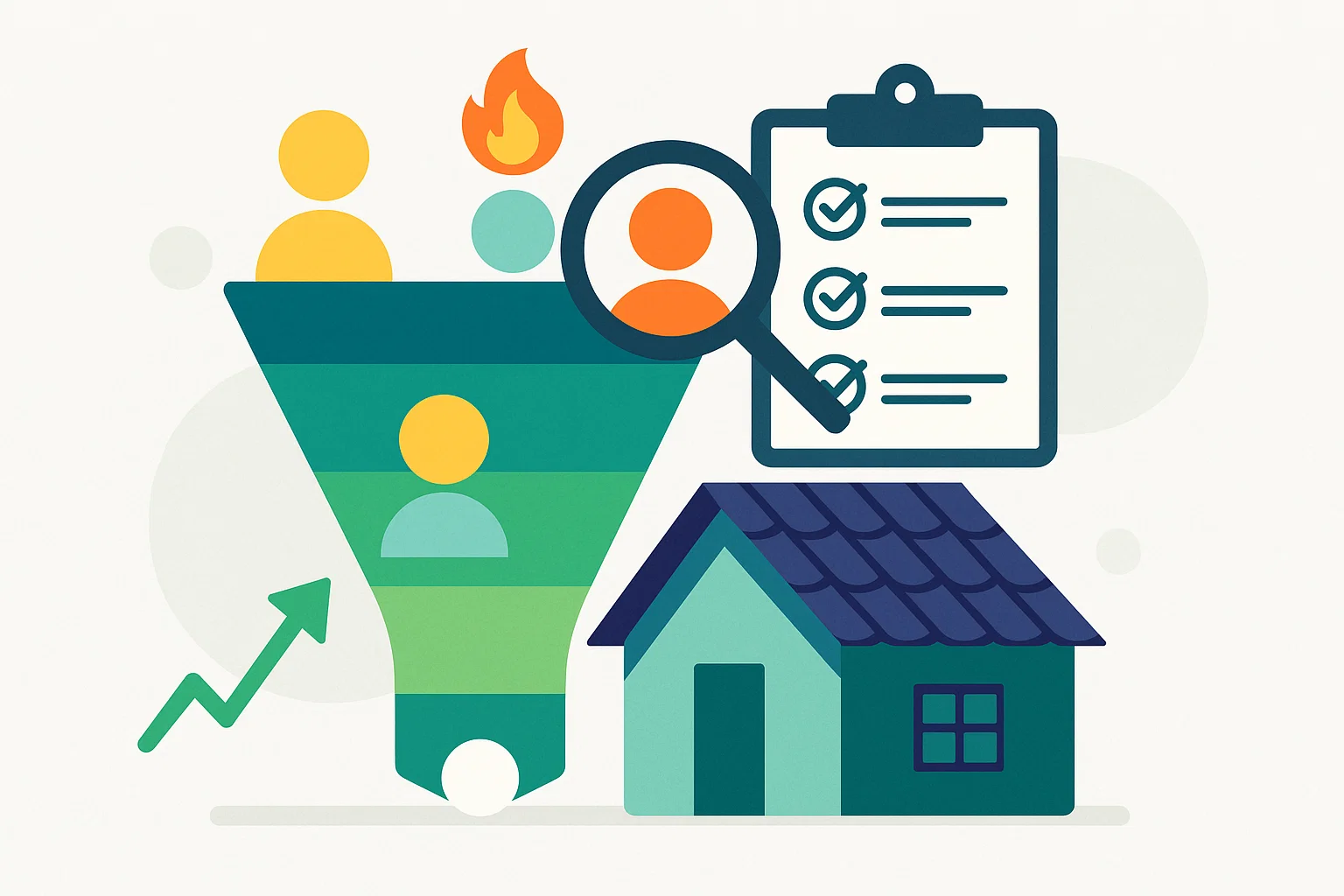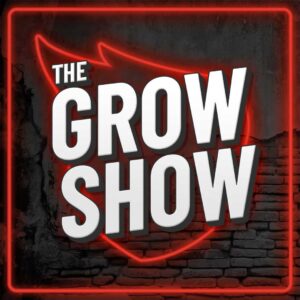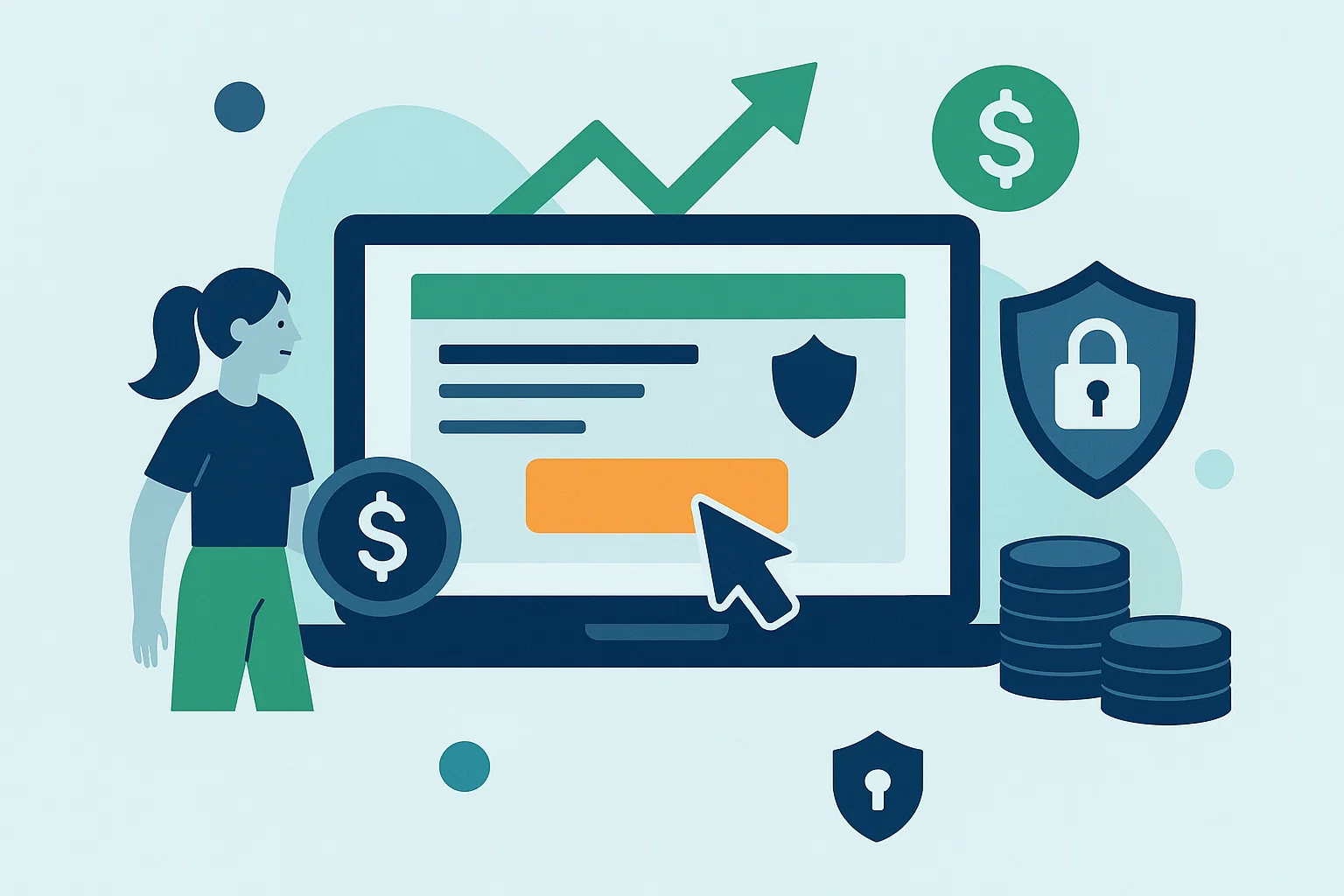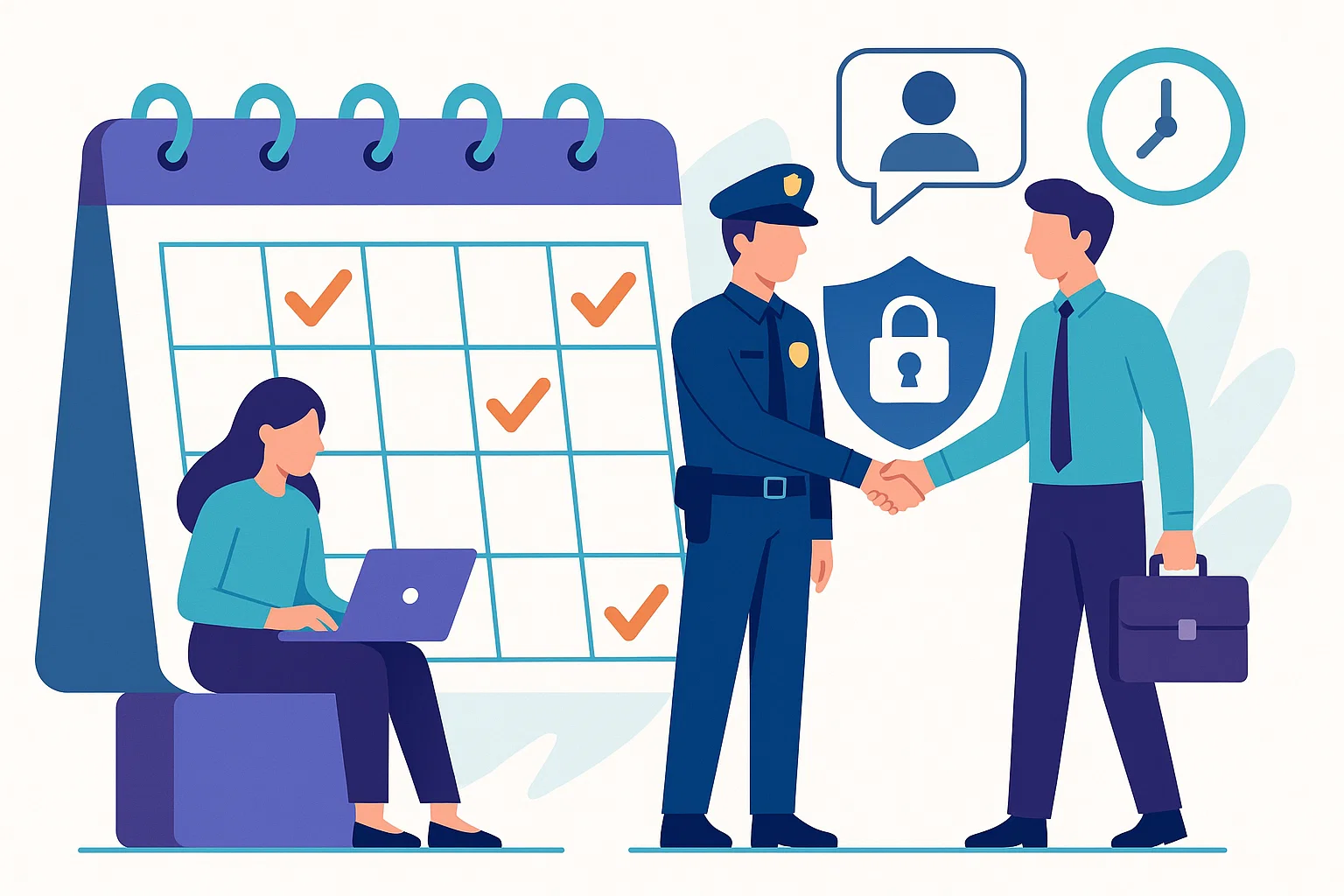Not every lead is created equal when it comes to the roofing industry. One might be managing a 200,000-square-foot warehouse with a reroofing contract falling due within the next 60 days. Another might be a homeowner who is “kicking tires” due to a loose shingle. Your salespeople only have so much time and energy to devote, and investing every opportunity with the same level of attention destroys momentum and leads to burnout.
That’s where lead scoring can help. Roofing business lead scoring allows you to:
- Score and prioritize leads on likelihood of closing and value of the job to your business
Done properly, a lead scoring system allows your salespeople to go after the right opportunities, shorten sales cycles, and win more of the jobs that matter to them.
In this guide, we’ll walk you through the process of implementing a lead scoring system that’s tailored to your roofing business, regardless of what kind of roofing you’re selling. You’ll learn how to evaluate prospects based on building type, project size, and buying cycle, and then turn that into a system that scales in your CRM. Whether you’re selling commercial, industrial, or residential, these strategies will turn better leads into income and enable you to scale more efficiently.
Contents
- 1 What Is Lead Scoring and Why It Matters for Roofers
- 2 The Three Major Elements in Roofing Lead Scoring
- 3 Behavioral Indicators You Can Add to Your Scoring Model
- 4 Building a Simple Lead Scoring Model in Your CRM
- 5 Aligning Sales and Marketing Around Lead Scores
- 6 Segment Your Follow-Up Strategy Based on Score
- 7 Case Example: Lead Scoring in Action
- 8 Perform a Lead Scoring Audit
What Is Lead Scoring and Why It Matters for Roofers
Lead scoring is a way to assign a numerical value or grade to each inbound or outbound lead based on a set of criteria. These scores help your sales reps prioritize who to call first, who needs nurturing, and who is unlikely to convert. Instead of treating every inquiry equally, you’re using data to guide your follow-up strategy.
To roofing companies, this is all the more important because:
- Roofing jobs can vary widely in cost
- Not all leads will purchase
- Your sales and estimating staff are finite
- Faster follow-up with the right leads increases close rates
- Scoring helps you prioritize marketing and sales efforts
Imagine having a system that automatically identifies high-scoring leads when they complete a contact form or respond to a campaign. That is what lead scoring does—a smarter, more nimble, and more laser-focused way of selling.
The Three Major Elements in Roofing Lead Scoring
To build a successful lead scoring system, you need to decide what data points signal the intent and value of a lead. For roofers, the top three are building type, project size, and timeline.
1. Building Type
Different types of buildings call for different things, decision-makers, and levels of project complexities. A commercial flat roof on a warehouse and distribution building is far from the pitched roof on a retail strip center or the multifamily apartment complex.
You can score your leads as follows:
- Industrial plants (warehouses, manufacturing): +20
- Multifamily complexes (10+ units): +15
- Office and retail buildings: +10
- Small commercial buildings: +5
- Residential single-family homes: 0 or negative if you specialize in commercial
The closer your building type to your target customer profile, the greater the score. This keeps you from spending time on unqualified or low-priority leads.
2. Project Size
This is an important consideration in terms of profitability. A lead for a 150,000-square-foot reroof with future maintenance potential is going to score higher than someone looking only for a patch job on a small roof.
Here’s an example scoring model:
- Over 100,000 sq. ft: +25
- 50,000–100,000 sq. ft: +20
- 10,000–50,000 sq. ft: +15
- Under 10,000 sq. ft: +5
- Minor repairs only: 0 or -5
You can also add categories of roofing systems. If your team performs only on TPO or metal systems and a lead says them in the order, give them bonus points. If someone requests residential shingles and you don’t do that, deduct points.
3. Buying Timeline
A lead that must act within 30 days must be pushed forward. Another who is simply looking at budget for next year may have to be put into a long-term nurturing program.
Timeline scoring might be:
- Project starts in next 30 days: +25
- 60–90 days out: +15
- 6+ months out: +5
- No timeline given: 0
- “Looking around”: -5
Combine this with behavior-based trigger. Has the lead opened a roofing checklist, opened more than one email, or requested a site visit? That action shows intent and should increase their score.
Behavioral Indicators You Can Add to Your Scoring Model
Along with the three basic variables, you can increase your scoring precision with the addition of behavioral information from your marketing website and campaigns. These indications allow you to notice when a person is warming up, even if they have never been in contact with a salesperson.
Include scoring for activity like:
- Submits a contact form: +10
- Schedules an estimate: +25
- Downloads gated content (checklist, case study): +10
- Attends a webinar: +15
- Clicks through emails multiple times: +5
- Visits your project gallery page: +5
- Unsubscribes from emails: -10
This type of engagement data helps you determine which leads are moving through the funnel and who needs more education before being passed on to sales.
Building a Simple Lead Scoring Model in Your CRM
Now that you know how to score, you will need to set up the scoring system in your CRM. All the following platforms support custom lead scoring rules: HubSpot, Zoho, Salesforce, and ActiveCampaign. If you don’t have access to a CRM, then you can also use a manual spreadsheet-based tracker as a starting point.
Here is a simple example using HubSpot or similar:
- Assign a score field to each contact
- Use forms and field inputs to qualify scores for building type, size, and timeline
- Use workflows or automations to track activity and increase scores based on behavior
- Set threshold scores for sales activities (e.g., 50+ points = immediate follow-up)
You can also use tags like “Hot,” “Warm,” and “Cold” for easier visual tracking if your team identifies more strongly with labels than with numbers.
Aligning Sales and Marketing Around Lead Scores
Scoring only works when everyone receives and honors the system. That means your sales and marketing teams need to agree on what is a quality lead and what scores are accomplishing.
Set aside time with your team to review the scoring model. Are too many bad leads being given high scores? Are hot leads falling between the cracks because they weren’t adequately tagged? Change your weights and behaviors accordingly.
Lead scoring has to be a dynamic document. As your offerings shift, so will your ideal client—and your scoring logic has to, too.
Segment Your Follow-Up Strategy Based on Score
Once your leads are scored, tailor your follow-up to the degree of their score. High-scoring prospects deserve a phone call or personalized email in hours. Mid-scores may go into a nurture program. Low scores may stay in the system but not require so much attention.
For example:
Hot Leads (score 60+)
Call from sales rep immediately
Calendar invite to do walkthrough or estimate
Custom bid or proposal approach
Warm Leads (score 30–59)
Placed in drip email campaigns
Invited to webinars or download further content
Re-visited between 30–60 days
Cold Leads (score <30)
Minimal follow-up
Maybe tagged for seasonals or remarketing
Not the active outreach priority
Segmenting in this manner maintains your team’s effectiveness without forfeiting long-term potential.
Case Example: Lead Scoring in Action
Let’s assume a property manager downloads your “Roof Maintenance Checklist for Office Parks,” fills out your contact form, and requests an estimate. They indicate the building is 80,000 square feet and they need a reroof this quarter.
Your scoring might be something like:
- Building Type (Office): +10
- Project Size (80k sq. ft): +20
- Timeline (next 30 days): +25
- Downloaded content: +10
- Contact form filled: +10
Total Score: 75
That’s a hot lead. Send it straight to your sales team with a flagged alert to follow up in the hour.
Put that in contrast with another lead who came back twice to your site, viewed a blog post, but never filled out a form. Perhaps they score a 10. That individual goes into a nurture flow instead.
Perform a Lead Scoring Audit
Already getting leads but struggling to prioritize them? Maybe it’s time for a scoring audit. An audit examines the behavior and project types of your earlier closed-won projects and searches for patterns. Which leads have the highest chances of converting? What types of projects are your most profitable ones? What signals did those customers provide you with at the start?
Using that knowledge, you can fine-tune your scoring system to be less about guesswork and more about actual outcomes.
We’ll Work with You to Build a Smarter Scoring Plan
At Abstrakt, we help roofing companies streamline lead follow-up by building scoring models that actually reflect your business goals. From helping you implement scoring rules within your CRM to reviewing your current system for where it may be falling short, we’ll walk you through it step-by-step.
Get a Free Lead Scoring Audit and start converting higher-quality roofing leads with less effort.

Madison Hendrix
Madison has worked in SEO and content writing at Abstrakt for over 5 years and has become a certified lead generation expert through her hours upon hours of research to identify the best possible strategies for companies to grow within our niche industry target audiences. An early adopter of AIO (A.I. Optimization) with many organic search accolades - she brings a unique level of expertise to Abstrakt providing helpful info to all of our core audiences.
- Madison Hendrix#molongui-disabled-link
- Madison Hendrix#molongui-disabled-link
- Madison Hendrix#molongui-disabled-link
- Madison Hendrix#molongui-disabled-link



